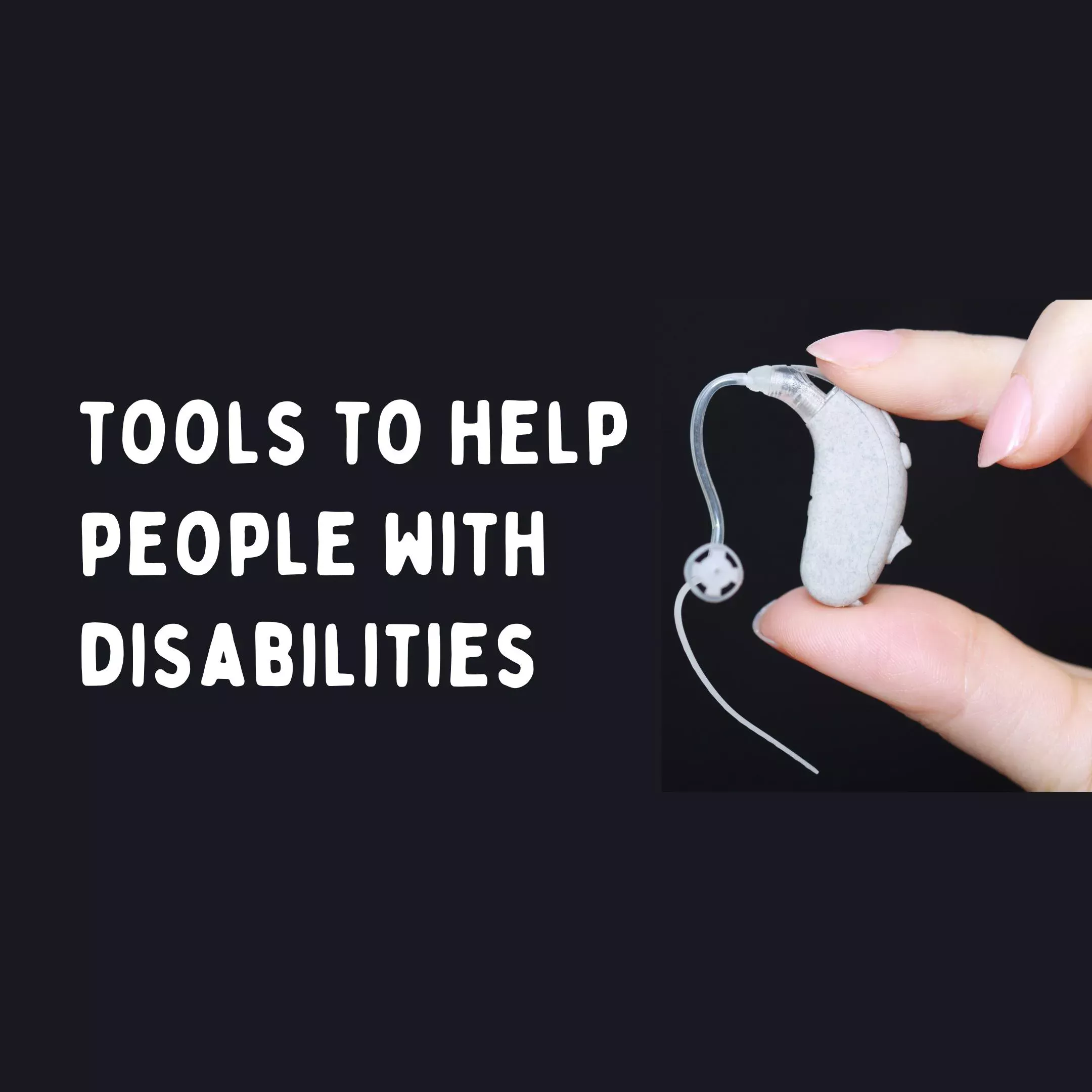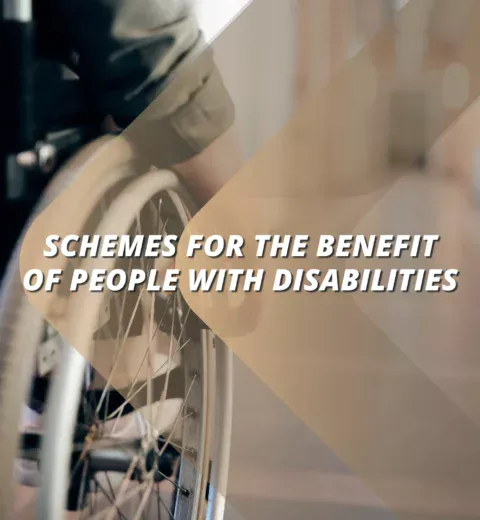In today’s fast-paced, technology-driven world, there is a wealth of tools and technologies available to support and empower individuals with disabilities in India. These tools have the power to break down barriers and offer new avenues for independence and inclusion. Whether it’s assisting those with visual, hearing, mobility, or communication impairments, or addressing specific challenges like dyslexia or speech disorders, the range of available tools is vast. In this guide, we will explore the top 10 tools designed to help people with disabilities in India, offering them the means to live more fulfilling and connected lives while contributing their unique talents to society. These tools are not only transformative for the individuals who use them but are also instrumental in shaping a more inclusive and equitable future for all.
There are numerous tools and technologies available to assist people with disabilities in India, ranging from assistive devices to software applications. Here are 10 tools that can be particularly helpful:
1. Screen Readers:
Screen readers like JAWS, NVDA, or TalkBack are essential for people with visual impairments, as they read aloud the content displayed on computer screens or mobile devices. Screen readers are assistive technologies designed to make digital content accessible to individuals with visual impairments. These software applications interpret and convert digital text into synthesized speech or braille output, enabling users to navigate websites, applications, and documents. Screen readers play a crucial role in providing equal access to information and opportunities for people who are blind or visually impaired, allowing them to independently engage with digital content. These tools often incorporate features such as keyboard shortcuts, voice commands, and customizable settings to cater to the diverse needs of users. As the digital landscape continues to evolve, the importance of screen readers in fostering inclusivity and ensuring a seamless online experience for individuals with visual disabilities becomes increasingly evident.
2. Braille Displays:
Braille displays, such as the VarioUltra or Orbit Reader, provide tactile feedback for those who are blind, allowing them to read digital content. Braille displays are essential assistive devices that facilitate tactile access to digital information for individuals with visual impairments. Comprising a series of small, refreshable cells that form Braille characters, these displays sync with computers, smartphones, or other devices to convert on-screen text into tactile output. Users can read and interpret the information through touch, allowing them to navigate digital content such as documents, websites, and emails. Braille displays enhance the independence and efficiency of individuals who are blind or visually impaired, enabling them to engage with technology and written materials in a way that aligns with their unique needs. As technology advances, these devices continue to evolve, incorporating features like cursor tracking and advanced navigation, further empowering users to access and comprehend a broad range of digital content through the sense of touch.
3. Mobility Aids:
Tools like canes, wheelchairs, and mobility scooters enhance the independence of individuals with mobility impairments. Mobility aids encompass a diverse range of devices designed to enhance the independence and mobility of individuals with physical disabilities or limited ambulatory capabilities. From traditional items like canes and crutches to more advanced tools such as walkers and motorized scooters, these aids cater to a variety of needs. Wheelchairs, both manual and electric, are pivotal components of this category, offering users the ability to move comfortably and efficiently. The advent of innovative technologies has introduced smart and sensor-equipped mobility aids, enhancing navigation and safety for users. Whether assisting with balance, providing support, or facilitating movement, these aids contribute significantly to fostering inclusivity and enabling individuals with mobility challenges to navigate and participate in their surroundings with greater autonomy.
4. Communication Devices:
Augmentative and alternative communication (AAC) devices, like Tobii Dynavox or Proloquo2Go, assist individuals with speech and communication challenges. Communication devices play a pivotal role in facilitating effective interaction and expression for individuals facing challenges in speech or language. These devices, ranging from basic augmentative and alternative communication (AAC) tools to sophisticated speech-generating devices, are designed to empower people with communication disorders or disabilities. AAC devices can include symbols, pictures, or text that users can select to convey their thoughts, needs, or emotions. In more advanced cases, speech-generating devices utilize synthesized voices to vocalize the input provided by users. These devices are invaluable for individuals with conditions such as autism, cerebral palsy, or speech disorders, enabling them to communicate with others and participate more fully in social, educational, and professional contexts. As technology continues to advance, communication devices evolve, offering customizable options and intuitive interfaces to better cater to the diverse communication needs of individuals with varying abilities.
5. Hearing Aids:
Assistive listening systems, such as personal FM systems or loop systems, aid those with hearing loss in various environments. Hearing aids are transformative assistive devices designed to enhance auditory perception and improve the quality of life for individuals with hearing impairments. These small electronic devices are worn either inside or behind the ear and are engineered to amplify and clarify sounds in various environments. Modern hearing aids utilize advanced technologies, including digital signal processing and directional microphones, to selectively amplify desired sounds while minimizing background noise. Some models even connect wirelessly to smartphones or other devices, providing additional features like streaming audio and personalized settings. By addressing the specific hearing needs of individuals, hearing aids contribute significantly to communication, social engagement, and overall well-being, allowing users to navigate a world of sounds with greater clarity and confidence.
6. Assistive Listening Devices:
Assistive listening systems, such as personal FM systems or loop systems, aid those with hearing loss in various environments. Assistive Listening Devices (ALDs) are technological solutions designed to enhance auditory experiences for individuals with hearing impairments. These devices work by amplifying sounds in specific settings, making it easier for users to hear and understand spoken communication. ALDs can include personal amplifiers, loop systems, and FM systems, each catering to diverse needs and environments. Personal amplifiers, for instance, amplify sound for individual users in various situations, while loop systems transmit audio signals directly to hearing aids equipped with telecoil technology. FM systems use radio signals to transmit sounds from a speaker or microphone directly to the user’s device, reducing the impact of distance and background noise. By providing tailored solutions for different listening scenarios, Assistive Listening Devices play a crucial role in promoting accessibility and improving communication for individuals facing hearing challenges.
7. Voice Recognition Software:
Tools like Dragon Naturally Speaking or Google’s Voice Typing assist people with mobility or speech impairments by transcribing spoken words into text. Voice recognition software, also known as speech recognition technology, represents a groundbreaking advancement in human-computer interaction. This software interprets spoken words and converts them into text, allowing users to control devices, dictate text, or navigate applications using their voice. It has proven particularly valuable for individuals with mobility impairments or those seeking hands-free computing experiences. Voice recognition software has evolved significantly, incorporating sophisticated algorithms and machine learning techniques to enhance accuracy and adapt to individual speech patterns. Widely used in various applications, from virtual assistants on smartphones to transcription services and accessibility tools, this technology not only streamlines tasks but also fosters inclusivity by providing an alternative means of interaction for those with physical or motor skill limitations. As the field continues to advance, voice recognition software contributes to making technology more accessible and user-friendly across diverse contexts.
8. Text-to-Speech Software:
Text-to-speech (TTS) software, like Balabolka or Natural Reader, converts written text into spoken words, benefiting those with dyslexia or visual impairments. Text-to-Speech (TTS) software serves as a valuable assistive technology, converting written text into spoken words, thereby enabling auditory access to digital content. This technology is instrumental in making information more accessible for individuals with visual impairments, learning disabilities, or those who prefer an auditory learning style. TTS systems utilize synthetic voices that have evolved to sound increasingly natural and expressive, providing a versatile means of consuming written content in various contexts, such as e-books, websites, and documents. Beyond accessibility, text-to-speech software finds applications in hands-free navigation, language learning, and proofreading, contributing to a more inclusive digital experience for users with diverse needs and preferences. The continual refinement of TTS technology enhances its role in breaking down barriers to information and communication, fostering a more inclusive and accessible digital landscape.
9. Screen Magnification Software:
Software such as ZoomText or Windows Magnifier enlarges text and images on computer screens for people with low vision. Screen magnification software plays a crucial role in enhancing accessibility for individuals with visual impairments by enlarging on-screen content. This assistive technology allows users to zoom in on text, images, or entire interfaces, tailoring the visual experience to their specific needs. By offering customization options such as magnification level, color contrast, and cursor enhancements, screen magnification software caters to a variety of visual challenges. This technology is invaluable for tasks such as reading documents, browsing websites, or navigating software interfaces, providing a more inclusive computing experience. As the digital landscape continues to evolve, screen magnification software remains a vital tool, promoting independence and usability for individuals with low vision or other visual impairments, allowing them to engage with digital content more effectively.
10. Sign Language Apps:
Mobile apps like SignEasy or ProDeaf can help bridge communication gaps for individuals who use sign language. Sign language apps represent a dynamic and innovative approach to bridging communication gaps and promoting inclusivity for individuals who are deaf or hard of hearing. These applications leverage video demonstrations, interactive lessons, and gamified features to teach and reinforce sign language skills. Users can learn and practice signs at their own pace, enhancing their ability to communicate with the Deaf community or in environments where sign language is utilized. Some apps also incorporate features like quizzes, dictionaries, and social networking components to further enrich the learning experience. Sign language apps not only serve as educational tools but also contribute to breaking down communication barriers, fostering greater understanding, and empowering individuals to engage more fully in both digital and real-world interactions.
Conclusion:
In this exploration of the top 10 tools to assist individuals with disabilities in India, we’ve witnessed the transformative power of technology and innovation. These tools have broken down barriers and opened doors for countless individuals, enabling them to lead more independent, fulfilling lives. From screen readers and mobility aids to communication devices and sign language apps, these technologies have offered solutions that cater to a wide range of needs. It’s not just about accessibility; it’s about empowerment and inclusion. As we continue to develop and embrace these tools, we move closer to a more compassionate and equitable society where the unique talents and perspectives of every individual, regardless of their abilities, are recognized and celebrated. By supporting these tools and the individuals who use them, we take significant steps toward creating a world where diversity is truly cherished and everyone can thrive.
These tools and technologies are instrumental in enhancing the daily lives and opportunities of individuals with disabilities in India, fostering greater inclusion and independence. However, it’s important to note that the choice of tools should be based on the specific needs and preferences of each person, as disabilities can vary widely.




